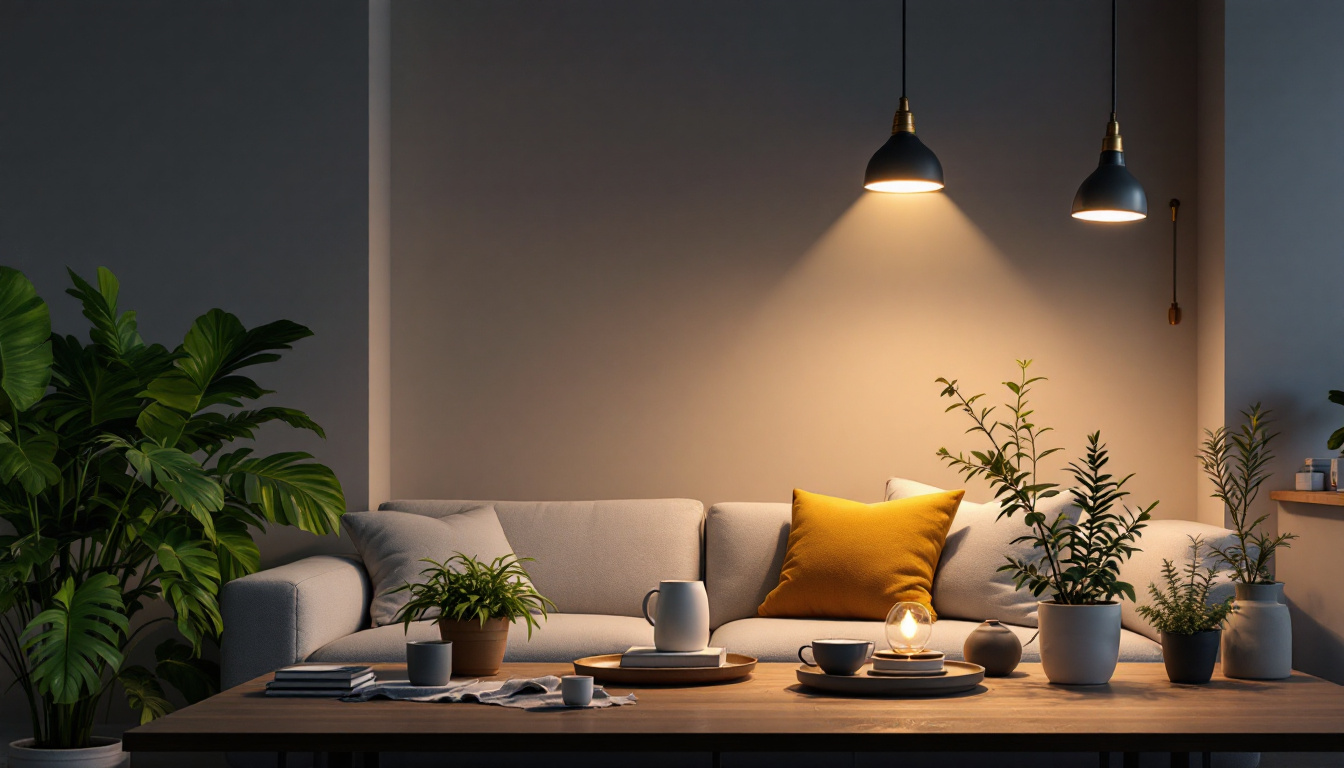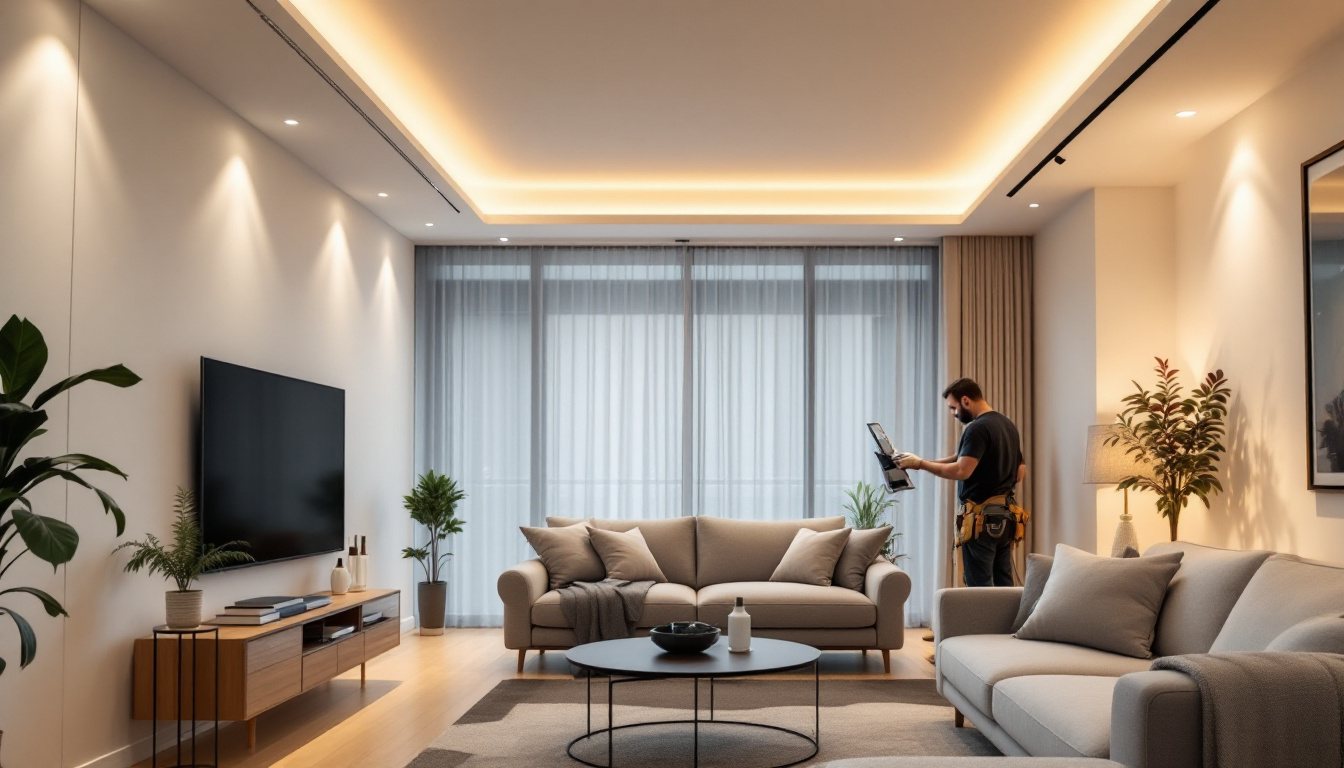
can lighting fixtures, often referred to as recessed lights, are an essential component in modern lighting design. These fixtures are installed into the ceiling, providing a clean and unobtrusive way to illuminate spaces. Unlike traditional light fixtures that hang down and can obstruct sightlines, can lights blend seamlessly into the architecture, offering a minimalist aesthetic that appeals to many homeowners and designers alike.
These fixtures come in various sizes and styles, making them versatile enough to suit different applications. From residential settings to commercial spaces, can lighting can enhance the overall ambiance while providing functional illumination. However, despite their benefits, many lighting projects overlook the importance of selecting the right can lighting fixtures, which can lead to subpar results.
At their core, can lighting fixtures consist of several key components: the housing, trim, and the light source. The housing is the part that is installed within the ceiling, providing a structure for the fixture. It is crucial to choose the right housing type based on the ceiling material and insulation requirements. For instance, new construction housing is designed for installation before the ceiling is finished, while remodel housing is meant for retrofitting into existing ceilings.
The trim is the visible part of the fixture that can be customized to fit the design aesthetic of the space. Trims come in various styles, including baffle, reflector, and adjustable options, allowing for a range of lighting effects. The light source, typically an LED bulb, is what ultimately determines the quality and intensity of the illumination. Selecting the right combination of these elements is essential for achieving the desired lighting effect. Furthermore, the choice of color temperature for the bulbs can significantly impact the mood of the room; warmer tones create a cozy atmosphere, while cooler tones can make spaces feel more vibrant and energetic.
One of the primary advantages of can lighting is its ability to provide even illumination throughout a space. This is particularly beneficial in areas where traditional fixtures may create shadows or uneven lighting. Can lights can be strategically placed to highlight specific areas, such as artwork or architectural features, enhancing the overall design of the room.
Moreover, can lighting fixtures are energy-efficient, especially when using LED bulbs. They consume less power compared to incandescent or fluorescent options, which can lead to significant savings on energy bills over time. Additionally, the longevity of LED bulbs means less frequent replacements, further contributing to cost-effectiveness. Beyond energy savings, the use of can lighting can also improve the overall aesthetic of a home or business. By allowing for a more open and airy feel, these fixtures can make spaces appear larger and more inviting. When combined with dimmer switches, can lights offer the flexibility to adjust brightness levels according to the time of day or the desired ambiance, making them an ideal choice for multifunctional spaces.
Despite their advantages, many lighting projects fail to utilize can lighting fixtures effectively. Common mistakes can lead to poor lighting quality and dissatisfaction with the final results. Understanding these pitfalls can help lighting contractors avoid them and deliver exceptional outcomes for their clients.
One of the most frequent errors in can lighting projects is improper placement of the fixtures. Can lights should be strategically positioned to ensure even coverage and avoid hotspots or shadows. A common guideline is to space the fixtures approximately 4 to 6 feet apart, depending on the height of the ceiling and the wattage of the bulbs used. However, this is not a one-size-fits-all solution; each space may require a tailored approach based on its unique characteristics.
Additionally, placing can lights too close to walls can create undesirable shadows and diminish the overall effect. A well-thought-out layout not only enhances the lighting but also contributes to the room’s aesthetics.
Another oversight is neglecting to incorporate dimming options into the can lighting design. Dimmers allow users to adjust the brightness according to their needs, creating a versatile environment that can shift from bright task lighting to a softer, more ambient glow. This flexibility is especially important in spaces that serve multiple functions, such as living rooms or dining areas.
Moreover, not all LED bulbs are compatible with dimmers, which can lead to flickering or limited functionality. It is crucial to ensure that both the bulbs and the dimmer switches are compatible to achieve the desired results.
Selecting the appropriate can lighting fixtures is vital for the success of any lighting project. With a myriad of options available, lighting contractors must consider several factors to ensure they make informed decisions that meet their clients’ needs.
Before choosing can lighting fixtures, it is essential to assess the space thoroughly. Factors such as ceiling height, room size, and intended use should all be taken into account. For instance, higher ceilings may require fixtures with higher wattage or specialized optics to ensure adequate illumination reaches the floor.
Additionally, understanding the room’s function can guide the selection process. A kitchen may benefit from brighter, focused lighting for task-oriented activities, while a bedroom might require softer, ambient lighting for relaxation. Tailoring the fixture selection to the specific needs of each space can significantly enhance the overall lighting design.
As energy efficiency becomes increasingly important, selecting can lighting fixtures that utilize LED technology is a wise choice. LED bulbs consume significantly less energy than traditional incandescent bulbs and have a longer lifespan, which translates to reduced maintenance costs over time.
When selecting LED can lights, it is also important to consider the color temperature of the bulbs. Warmer temperatures (around 2700K to 3000K) create a cozy atmosphere, while cooler temperatures (4000K to 5000K) are better suited for task-oriented spaces. Understanding the impact of color temperature on the overall ambiance can help lighting contractors make informed recommendations to their clients.
Once the right can lighting fixtures have been selected, proper installation is crucial to ensure optimal performance. Following best practices during installation can prevent common issues and enhance the longevity of the fixtures.
One of the most critical aspects of installing can lighting fixtures is ensuring proper insulation around the housing. Many fixtures are rated for contact with insulation (IC-rated), allowing them to be installed in insulated ceilings without the risk of overheating. However, non-IC-rated fixtures should be kept away from insulation to prevent fire hazards.
Proper insulation not only enhances safety but also improves energy efficiency by reducing heat loss. Lighting contractors should always verify the rating of the fixtures being installed and adhere to local building codes and regulations.
Before finishing the ceiling or covering the fixtures, it is advisable to test the can lights to ensure they function correctly. This step can save time and effort in the long run, as troubleshooting issues after installation can be cumbersome and costly. Testing the fixtures allows for adjustments to be made before the final touches are applied, ensuring a smooth and successful project completion.
Can lighting fixtures offer more than just functional illumination; they can also enhance the overall design of a space. By strategically incorporating these fixtures, lighting contractors can create visually appealing environments that reflect the homeowner’s style and preferences.
One effective technique in lighting design is layering light, which involves using multiple sources of light to create depth and dimension. Can lighting can serve as one layer in this design strategy, complementing other fixtures such as pendant lights, wall sconces, or table lamps. By combining different types of lighting, contractors can achieve a balanced and inviting atmosphere.
For instance, in a living room, can lights can be used to provide general illumination, while a stylish floor lamp adds a warm glow for reading. This layered approach not only enhances functionality but also elevates the aesthetic appeal of the space.
Can lighting can also be utilized to highlight architectural features within a space. By strategically placing fixtures to illuminate specific elements, such as crown molding, beams, or artwork, contractors can draw attention to these details, adding character and sophistication to the design.
For example, installing adjustable can lights above a piece of artwork can create a gallery-like effect, showcasing the artwork while enhancing the overall ambiance of the room. This technique not only adds visual interest but also allows homeowners to personalize their spaces further.
In conclusion, can lighting fixtures are a vital component of many lighting projects, yet they are often overlooked or improperly utilized. By understanding the anatomy of these fixtures, the common mistakes to avoid, and the best practices for selection and installation, lighting contractors can elevate their projects to new heights.
As the demand for energy-efficient and aesthetically pleasing lighting solutions continues to grow, can lighting offers a versatile and effective option for both residential and commercial applications. By incorporating these fixtures thoughtfully into their designs, contractors can create spaces that not only meet functional needs but also enhance the overall experience for occupants.
Ultimately, can lighting fixtures can be the missing piece in many lighting projects, providing the perfect blend of form and function. By prioritizing their inclusion and ensuring proper installation, lighting contractors can deliver exceptional results that leave a lasting impression on their clients.
Ready to enhance your lighting projects with the perfect can lighting fixtures? At LumenWholesale, we offer an extensive selection of top-quality, spec-grade lighting products at unbeatable wholesale prices. Say goodbye to inflated markups and hello to superior lighting that meets the highest industry standards. With our hassle-free bulk buying and free shipping, you can trust that you’re getting premium lighting at the best value — without hidden fees or compromises. Elevate your lighting design today and experience the best in wholesale lighting with LumenWholesale.

Discover how LED lights for canned light fixtures can significantly cut costs for lighting contractors.

Discover what distinguishes the top lighting contractors in the industry as we delve into the world of LED recessed lights.

Discover how partnering with lighting contractors can illuminate your business’s potential.

Discover essential insights and practical tips for lighting contractors in the U.S. with our guide on the history and evolution of the light bulb.